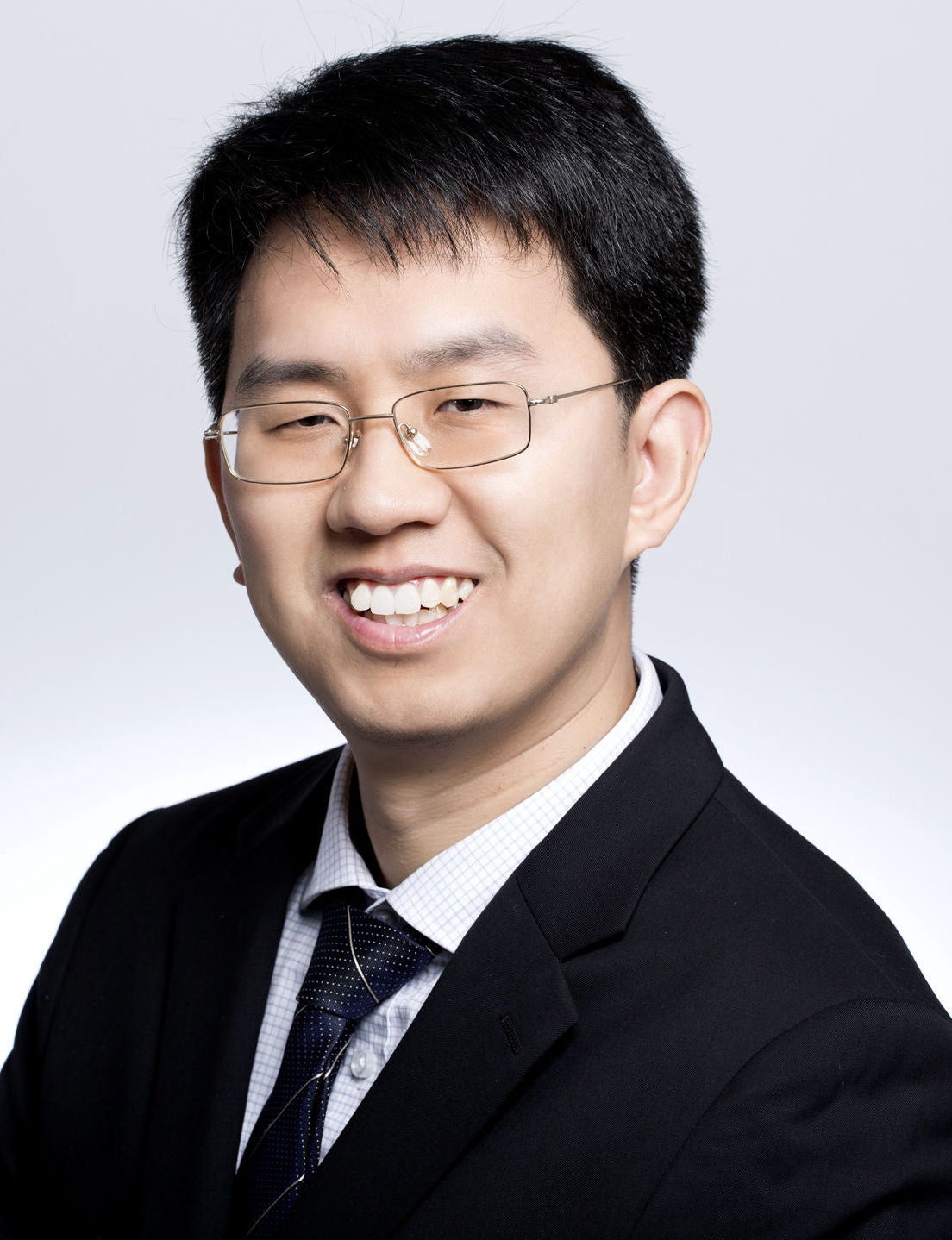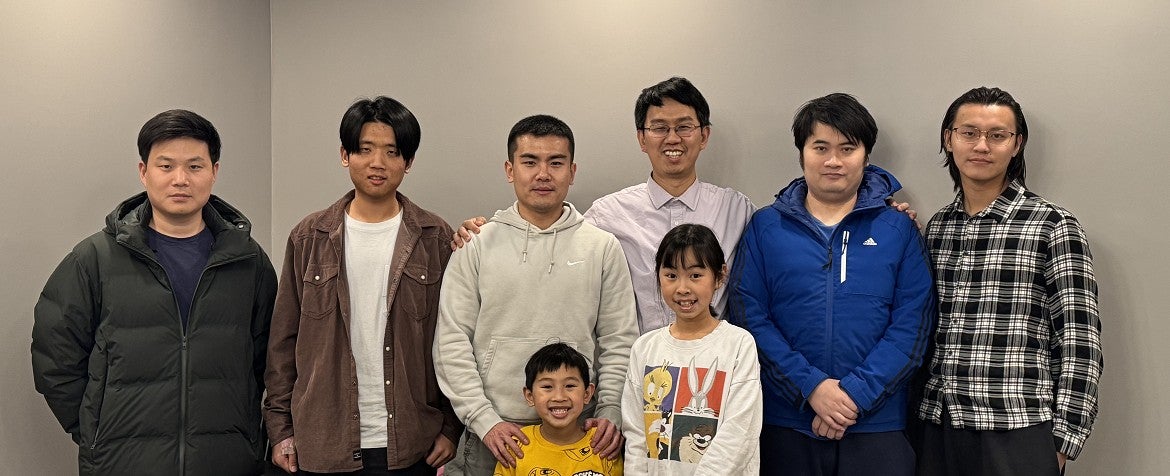
About
Dr. Wei Bao received his B.S. in physics (minor in chemistry) at Peking University, and his Ph.D. in materials science and engineering at the University of California, Berkeley. After graduation, he did his postdoc at UC Berkeley's Nanoscale Science and Engineering Center until 2019. Dr. Bao's current research interests broadly on optical materials and photonics. He received the National Science Foundation CAREER Award in 2022, Army Research Office Early Career Program Award in 2024, and the Rising Star of Light 2022 Award from the Nature Portfolio journal, Light: Science and Application.
Ph.D. in Materials Science and Engineering, University of California, Berkeley
M.S. in Mechanical Engineering, University of California, Los Angeles
B.S. in Physics and minor in Chemistry, Peking University, Beijing
Research
We Acknowledge the Federal Grants support from
- Office of Naval Research
- National Science Foundation
- US Army Research Office
- Defense Advanced Research Projects Agency
Recognition
ONR DURIP Award 2025
ARO Early Career Program Award 2024
Edgerton Innovation Award 2023
iCANX Young Scientist Award 2022
Rising Star of Light 2022
NSF CAREER Award 2022
ONR DURIP Award 2021
Nebraska FIRST Award 2020
Dorothy M. and Earl S. Hoffman Scholarships, American Vacuum Society 2015
AVS Nanometer Scale Science and Technology Division Student Award 2015
Ross N. Tucker Memorial Award, The Minerals, Metals & Materials Society 2015
MRS Graduate Student Gold Award, Materials Research Society 2013
R&D 100 Award, R&D Magazine 2013
Excellent Research Paper Award for President's Undergraduate Research Fellowship, Peking University 2009
Publications
Only Selected Publications
At UC Berkeley
1. Wei Bao†, M. Melli†, et. al. “Mapping Local Charge Recombination Heterogeneity by Multidimensional Nanospectroscopic Imaging”, Science, 338, 1317, (2012)
2. Wei Bao†, Nicholas J. Borys†, et. al. “Visualizing nanoscale excitonic relaxation properties of disordered edges and grain boundaries in monolayer molybdenum disulfide” Nature Communications, 6, 7993 (2015)
3. Xiaoze Liu†, Wei Bao†, et. al, “Control of coherently coupled exciton-polaritons in monolayer tungsten disulphide” Phys. Rev. Lett. 119 (2), 027403 (2017)
4. Rongkuo Zhao†, Lin Li†, Sui Yang†, Wei Bao†, et. al, “Stable Casimir Equilibria and Quantum Trapping”, Science, 364, 984, (2019)
5. Wei Bao†, Xiaoze Liu†, Fei Xue†, et. al, “Observation of Rydberg exciton polaritons and their condensate in a perovskite cavity”, PNAS. 116 (41), 20274, (2019)
At UNL
6. Yali Bi†, Chi Yang†, Lei Tong†, Haozheng Li, Boyu Yu, Shuai Yan, Guang Yang, Meng Deng, Yi Wang, Wei Bao*, Lei Ye*, Ping Wang*. "Far-field Transient Absorption Nanoscopy with Sub-50 nm Optical Super-Resolution", Optica 7(10), 1402-1407 (2020)
7. Quanwei Li†, Wei Bao†, Zhaoyu Nie, Yang Xia, Yahui Xue, Yuan Wang, Sui Yang, Xiang Zhang. "A non-unitary metasurface enables continuous control of quantum photon–photon interactions from bosonic to fermionic" Nature Photonics 15, 267–271 (2021)
8. Renjie Tao†, Kai Peng†, Louis Haeberlé , Quanwei Li , Dafei Jin , Graham R. Fleming , Stéphane Kéna-Cohen , Xiang Zhang*, Wei Bao*. "Halide perovskites enable polaritonic XY spin Hamiltonian at room temperature" Nature Materials, 21, 761–766 (2022)
9. Tingting Wang†, Zhihao Zang†, Yuchen Gao, Chao Lyu, Pingfan Gu, Yige Yao, Kai Peng*, Kenji Watanabe, Takashi Taniguchi, Xiaoze Liu, Yunan Gao*, Wei Bao*, Yu Ye*. "Electrically pumped polarized exciton-polaritons in a halide perovskite microcavity" Nano Letters, 22, 5175–5181, (2022)
10. Kai Peng†, Renjie Tao†, Louis Haeberlé , Quanwei Li , Dafei Jin , Graham R. Fleming , Stéphane Kéna-Cohen , Xiang Zhang*, Wei Bao*. "Room-temperature polariton quantum fluids in halide perovskites" Nature Communications, 13, 7388 (2022)
At RPI
11. Kai Peng†, Wei Li†, Meng Sun†, Jose Rivero, Chaoyang Ti, Xu Han, Li Ge, Lan Yang, Xiang Zhang*, Wei Bao*. "Topological valley Hall polariton condensation" Nature Nanotechnology 19, 1283–1289 (2024). Cover of the issue

12. Lei Tong†, Yali Bi†, Yilun Wang†, Kai Peng, Xinyu Huang, Wei Ju, Zhuiri Peng, Zheng Li, Langlang Xu, Runfeng Lin, Xiangxiang Yu, Wenhao Shi, Hui Yu, Huajun Sun, Kanhao Xue, Qiang He, Ming Tang, Jianbin Xu, Xinliang Zhang, Jinshui Miao, Deep Jariwala, Wei Bao*, Xiangshui Miao*, Ping Wang*, Lei Ye*. Nature Communications 15, 10290 (2024)
Group members

Spring of 2025
Postdoc:
Dr. Jianchen Dang
Graduate students:
Mr. Wei Li
Mr. Yilin Meng
Mr. Xiaolong Wu
Undergraduate students:
Mr. You Qian
Alumni:
Dr. Kai Peng, Now Assistant Professor at CAS
Lab equipment
Dr. Bao's group has one laser lab and one sample preparation lab at RPI
- Home-built Optical measurement setups capable of detecting low-level signals include but are not limited to:
o Light Conversion Inc. PHAROS 6W femtosecond laser with a collinear optical parametric amplifier system (350-2600 nm, 250 fs, and 1-200 kHz tunable pulse repetition rate)
o Coherent Inc. Chameleon Ultra II 3.5W with SHG module tunable femtosecond laser (340-540 nm, 680 nm-1080 nm, 140 fs, and 80 MHz repetition rate)
o JPT Inc. nanosecond pulsed laser with square shape Flattop beam converter (20W, 1064 nm, 2-350 ns tunable pulse width, 1-4000 kHz tunable repetition rate)
o Five C.W. lasers with various wavelengths at 488 nm, 532 nm, 505 nm, 632.8 nm, and 980 nm,
o Laser tables (three 5 feet x 8 feet x 12-inch RS2000 joint U shape from Newport, one 4 feet x 6 feet x 8 inch by Melles Griot)
o Spectrograph (Andor Kymera 328i) with a liquid N2 cooled InGaAs CCD detector (Teledyne Princeton Instruments, PyLon-IR) and Si air TE-cooled CCD detector (Andor EM Newton 970)
o Spectrograph (Teledyne Princeton Instruments SpectraPro HRS-750) with a liquid N2 cooled InGaAs CCD detector (Teledyne Princeton Instruments, PyLon-IR) and Si N2 cooled CCD detector (Teledyne Princeton Instruments, PyLoN)
o Teledyne Princeton Instruments ProEM-HS 1024BX3 EMCCD camera (-75oC, 1024 x 1024 pixels, 400-1000nm detection range)
o Hamamatsu InGaAs TE-cooled two-dimensional imaging NIR CCD camera (10oC, 320 x 256 pixel, 900-1700 nm detection range)
o Two Quantum Opus One® single-photon superconducting nanowire detectors with controller (1.0-1.6 μm)
o Two PDM single-photon counting detector modules (375 nm to 1000 nm range)
o Picoharp300 from PicoQuant Photonics Inc, timing electronics for g2 measurement and TCSPC module included, 4ps time resolution
o Multiple Mitutoyo's NIR infinity corrected long working distance objectives lens (50X 0.42NA, 20X 0.4NA, and 10X 0.26NA)
o Multiple Mitutoyo's VIS infinity corrected long working distance objectives lens (50X 0.75NA, 50X 0.5NA, 20X 0.4NA, 10X 0.28NA)
o Multiple Nikon ELWD objective lens with glass correction collar (60X 0.7NA, two 40X 0.6NA, two 20X 0.45NA)
o Nikon CFI PLAN LWD IMSI objective lens with glass correction collar (100X 0.85NA)
o 488 nm and 532.8 nm laser BragGrate™ Raman Filter sets that are capable of ultra-low frequency measurement down to 5 cm-1 with single-stage spectrometers.
o PInano® XYZ Piezo System, Clear Aperture for Microscope Slides, 200 µm × 200 µm × 200 µm moving range in XYZ direction, Piezoresistive Sensors, with USB Digital Controller.
o NanoCube® XYZ Piezo Flexure Nanopositioning system, 100 µm × 100 µm × 100 µm range in XYZ direction, Closed-Loop, Strain Gauge Sensors, with USB Digital Controller
- Quantum Design OptiCool System 7 Tesla Cryogen Free Conical Split-Coil Superconducting Magnet System with attocube piezo positioner (temperature range 1.7K-350K, with both high N.A. and transmission measurement capabilities)
- Source current/voltage meters and SR830 lockin amplifiers from Stanford Research System
- Home-built heating stage (295K-495K)
- VTI N2 gas Glove Box - Dual Workstation (4 Gloves, with <1ppm O2 and <1ppm H2O environment control)
- JASCO 8X FTIR spectrometer with maximum resolution 0.07 cm-1, and detection wavenumber range 7800 to 350 cm-1.
- Meadowlark P1920 spatial light modulator (1920 x 1200 Resolution 400 nm-1650 nm)
- Holoeye PLUTO-2.1-UV-099 spatial light modulator (1920 x 1080 Resolution 350 nm-500 nm)
- Two home-built sample inspection microscopes, with transfer stages for controllable 2D materials stacking.
- CVD tube furnace with vacuum pump.
- High vacuum (10-6 Torr) annealing station.
- Five 18MP USB 3.0 Color CMOS C-Mount microscope cameras
- Optomechanical parts from Thorlabs, Newport, Edmund Optics, Optosigma, and Opmount.
- Simulation Servers: a Dell R630 server (with 48 intel CPU cores 2.7 GHz and 384 GB 2133 MHz RAM), an Exxact server (with 128 AMD CPU cores 2.9 GHz and 512 GB 3200 MHz RAM).